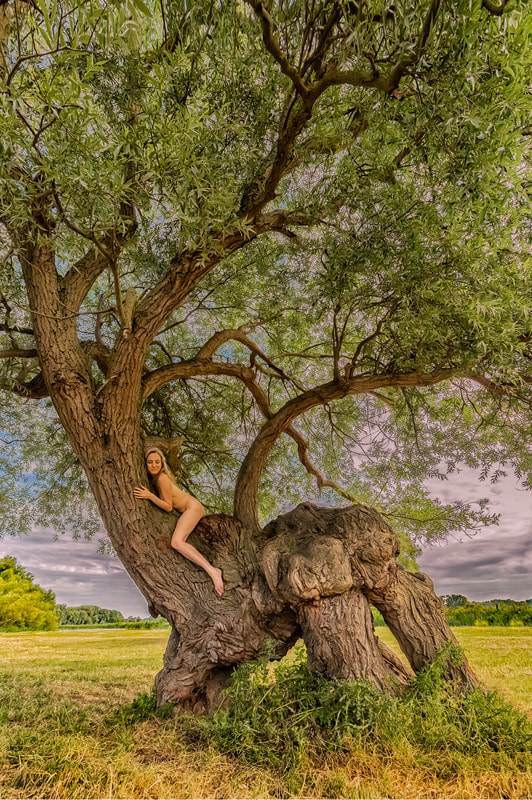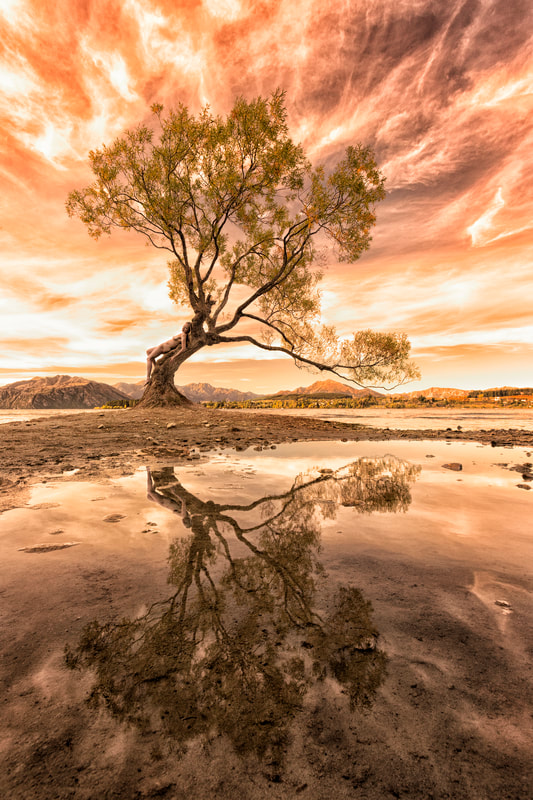White Willow – Salix alba
Natural History
|
Other Names: Willow, Saille.
Distinguishing Characteristics: White Willow can grow as a shrub or a tree, with single or multiple trunks. Deciduous, the green leaves are distinctively lanceolate, 2–4 in. (5–10 cm) long and .25–.6 in. (5–1.5 cm) wide, with undersides covered in very fine, white, silky hairs that shimmer in the wind. Flowers are long catkins that resemble caterpillars. (But this is not the species that produces 'pussy willows'). Young branches are slender and straight; some varieties are colorful in winter and prized by landscapers. Older trees often have a twisted and leaning crown, with bark is that rough and deeply fissured. Willows respond well to cutting by pollarding and coppicing, re-growing with fast, straight, flexible shoots. These shoots, if cut, regenerate easily by simply sticking them in the moist earth. There are many subspecies, cultivars, and varieties. Distribution: Native to Great Britain, Europe, and western and central Asia. Elevation: below sea level to 945 ft. (3,100 m). Ecosystem: Grows in wetland areas and along watercourses. Maximum Age: 100 years (longer if pollarded). Maximum Height and Girth: 100 ft. (30 m) in height; 12.5 ft. (3.8 m) in circumference. Animal Community: Caterpillars of puss moths, willow ermines, eyed hawk-moths, and red underwings feed off the new foliage. The catkins provide an important source of early nectar and pollen for bees. The branches are utilized by many species of birds for food, shelter, nesting, and roosting. Traditional Uses: Medicine: Infusions of the bark were used to treat headache, fever, pain, rheumatism, diarrhea, inflammation, and dandruff. The leaves were infused into a tea as a sedative. Food: The inner bark was eaten. Tools and Objects: Flexible shoots were important materials for making baskets, wicker furniture, hats, fencing, livestock pens, fishing traps, coracles (small Welsh boats), and wattle (long sticks braided and covered in mud for building). Gunpowder was also made from the wood. Art and Ceremony: Willow, associated with water, the moon, fertility, and magic, was identified with the Greek goddesses Persephone, Helice, Selene, Hecate, and Artemis; the Roman goddess Luna; the Sumerian goddess Belili and god Bel; and the Celtic goddess Brigit. Green George, a man comprised of willow branches, was a Romanian character in a seasonal fertility ritual. Branches were used in Celtic funerary ceremonies. Willow is the fourth tree in the Celtic Ogham tree alphabet. Its branches were used for dowsing and to make magic wands. Modern Uses: Willow was the original source of salicylic acid, used in the pharmaceutical production of aspirin. The lightweight wood is used to make cricket bats (var. caerulea), flooring, and boats. It is also being used artistically to create living sculptures, and in landscaping and restoration for erosion control. Threats and Conservation: Not threatened. |
|



